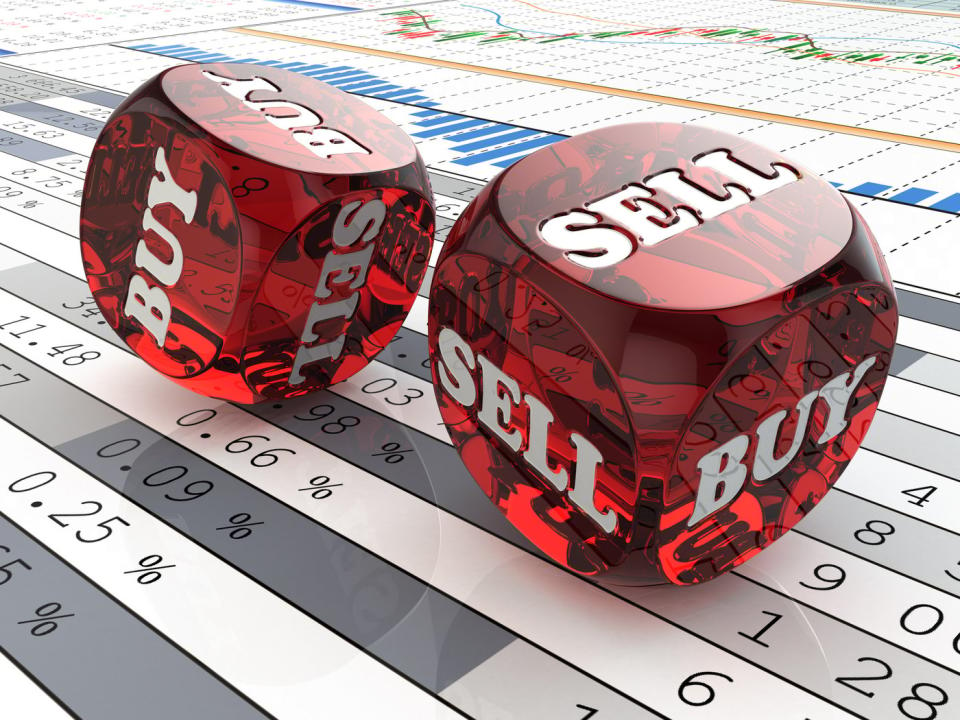You may not realize it, but one of the most important data releases of the entire quarter happened three weeks ago. During the heart of earnings season and following April’s highly anticipated inflation report, institutions with $100 million in assets under management filed Form 13F with the Securities and Exchange Commission.
Simply put, a 13F provides an over-the-shoulder snapshot of what the smartest and most successful investors on Wall Street bought and sold in the most recent quarter. In this case, it covered trading activity during the quarter ending March. While these snapshots are retrospective, they can provide valuable insight into which stocks, sectors and trends are capturing the interest of Wall Street’s top investors.
One theme that has stood out for more than a year has been Wall Street’s love of just about everything related to the artificial intelligence (AI) revolution. By using software and systems instead of people, and giving these systems the ability to evolve over time without human intervention, AI will have billions of dollars of utility across virtually all sectors and industries.

But what’s interesting about this affinity for AI stocks is that the face of the AI revolution has been sent to the chopping block by billionaire investors two quarters in a row. At the same time, we’ve seen billionaires repeatedly buy into another “Magnificent Seven” stock with abundant long-term potential.
More than six billionaires are dumping Nvidia stock
While artificial intelligence may be the hottest innovation since the advent of the Internet in the mid-1990s, it didn’t stop more than a half-dozen billionaire money managers from ditching stocks of the infrastructure backbone of the AI movement during the March 2014 to slide. ended quarter. Eight billionaire investors – nine if you count the recently deceased Jim Simons of Renaissance Technologies – sent shares Nvidia (NASDAQ: NVDA) packaging, including (total number of shares sold in brackets):
-
Philippe Laffont of Coatue Management (2,937,060 shares)
-
Ken Griffin of Citadel Advisors (2,462,716 shares)
-
Israel Englander of Millennium Management (720,004 shares)
-
Stanley Druckenmiller of Duquesne Family Office (441,551 shares)
-
John Overdeck and David Siegel of Two Sigma Investments (420,801 shares)
-
David Tepper of Appaloosa Management (348,000 shares)
-
Steven Cohen of Point72 Asset Management (304,505 shares)
There’s no denying that Nvidia has taken advantage of its AI-driven capabilities. The company’s graphics processing units (GPUs) are preferred in high-compute data centers, and as a result, the company benefits from out-of-this-world pricing power for these chips. Nvidia’s gross margin came in at a scorching 78.4% during its first fiscal quarter (ended April 28).
Nevertheless, there are four very clear reasons why billionaire investors are skeptical of Nvidia’s progress.
Perhaps most obviously, history has been unkind to the next big innovations over the past thirty years. Without a doubt, investors have overestimated the acceptance/adoption of any new innovation, and AI is unlikely to break this trend. If the AI bubble bursts, the company that benefited most directly from its rise (Nvidia) will be the most likely to deflate.
The second problem is that Nvidia’s pricing power on its GPUs is likely to decline in the coming quarters. Competitors are introducing GPUs designed to train large language models and oversee generative AI solutions in AI-accelerated data centers. Even if Nvidia’s H100 GPUs maintain an edge over their competitors, the increased availability of new GPUs will alleviate the scarcity that has sent Nvidia’s pricing power into the stratosphere. When this pricing power decreases, Nvidia’s gross margin will also decrease.
Another concern is the strict domestic regulations on AI solutions. In each of the past two years, U.S. regulators have imposed restrictions on the AI chips Nvidia can export to China, the world’s second-largest economy by gross domestic product. Nvidia even developed toned-down AI GPUs (the A800 and H800) specifically for China after the first round of export restrictions in 2022, but last year these chips were also banned for export to China. Without China, Nvidia will miss out on billions of dollars in potential quarterly revenue.
The fourth and final piece of the puzzle that may have encouraged billionaires to ring the cash register is an increasing amount of internal competition. Nvidia’s four largest customers account for about 40% of net revenue. The problem is that they are all developing their own AI GPUs. Regardless of whether these internally developed chips are to complement or completely replace Nvidia’s H100 GPUs, we’re likely to witness a spike in orders from these leading companies.


This Magnificent Seven stock has been the apple of billionaires’ eyes
Since the curtain rose in 2023, Magnificent Seven stocks have been widely credited with sending Wall Street’s major stock indexes to record highs. The Magnificent Seven are some of the largest (measured by market capitalization) and most influential companies in the country and consist of:
These seven companies are market leaders with well-defined long-term catalysts and clear competitive advantages. In fact, Nvidia’s four top customers I referred to earlier are Microsoft, Meta Platforms, Amazon, and Alphabet.
But these are also stocks that billionaires have been avid sellers of in recent quarters… with one exception: e-commerce giant Amazon. During the first quarter, nine billionaires piled into Amazon stock, including (total shares purchased in brackets):
-
Israel Englander of Millennium Management (2,390,755 shares)
-
Ole Andreas Halvorsen of Viking Global Investors (1,972,702 shares)
-
Chase Coleman of Tiger Global Management (1,438,600 shares)
-
Jeff Yass of Susquehanna International (1,336,042 shares)
-
Ray Dalio of Bridgewater Associates (1,047,891 shares)
-
Dan Loeb of Third Point (900,000 shares)
-
Ken Fisher of Fisher Asset Management (785,018 shares)
-
Ken Griffin of Citadel Advisors (352,453 shares)
-
Philippe Laffont of Coatue Management (241,514 shares)
You’ll notice that three of the biggest sellers of Nvidia stock (Laffont, Griffin, and Englander) were buyers of Amazon stock.
While Amazon’s online marketplace is considered the “face” of the company, that’s not why billionaires have taken the plunge. Amazon’s exceptional cash flow growth has everything to do with its three fast-growing supporting operating segments.
Nothing is more important to Amazon’s cash flow or bottom line than the continued growth and success of its cloud infrastructure services platform Amazon Web Services (AWS). Based on an analysis by Canalys, AWS was responsible for as much as 31% of global spending on cloud infrastructure services through the end of 2023. As of the quarter ending in March, AWS had surpassed $100 billion in annual revenue. With spending on enterprise cloud services still growing rapidly, the juicy margins associated with cloud services should allow Amazon to grow its operating cash flow quickly.
Subscription services (e.g. Prime) are another segment that could offer continued double-digit growth potential. In exchange for Prime member benefits like free two-day shipping on most online marketplace orders and access to Amazon’s growing content library, Amazon enjoys strong subscription pricing power with Prime. Amazon surpassed 200 million global Prime subscribers in April 2021, according to then-CEO Jeff Bezos, and has almost certainly added to that total.
The third higher-margin support segment that does heavy lifting for Amazon is advertising. When you get nearly 2.5 billion visitors to your site each month and the number of Prime subscribers grows, you can easily command higher prices from advertisers who want motivated buyers to see their message(s).
Put these three supporting segments together and you get a company that will more than double its cash flow per share between 2023 and 2027. Relative to its future cash flow, Amazon remains historically cheap.
Should You Invest $1,000 in Nvidia Now?
Before you buy shares in Nvidia, consider the following:
The Motley Fool stock advisor The analyst team has just identified what they think is the 10 best stocks for investors to buy now… and Nvidia wasn’t one of them. The ten stocks that survived the cut could deliver monster returns in the coming years.
Think about when Nvidia created this list on April 15, 2005… if you had $1,000 invested at the time of our recommendation, you would have $671,728!*
Stock Advisor provides investors with an easy-to-follow blueprint for success, including portfolio building guidance, regular analyst updates, and two new stock picks per month. The Stock Advisor is on duty more than quadrupled the return of the S&P 500 since 2002*.
View the 10 stocks »
*Stock Advisor returns June 3, 2024
Suzanne Frey, a director at Alphabet, is a member of The Motley Fool’s board of directors. John Mackey, former CEO of Whole Foods Market, an Amazon subsidiary, is a member of The Motley Fool’s board of directors. Randi Zuckerberg, former director of market development and spokeswoman for Facebook and sister of Mark Zuckerberg, CEO of Meta Platforms, is a member of The Motley Fool’s board of directors. Sean Williams holds positions at Alphabet, Amazon and Meta Platforms. The Motley Fool holds positions in and recommends Alphabet, Amazon, Apple, Meta Platforms, Microsoft, Nvidia and Tesla. The Motley Fool recommends the following options: long January 2026 $395 calls to Microsoft and short January 2026 $405 calls to Microsoft. The Motley Fool has a disclosure policy.
Forget Nvidia: billionaires are selling the artificial intelligence (AI) giant and piling into these “Magnificent Seven” stocks. originally published by The Motley Fool







